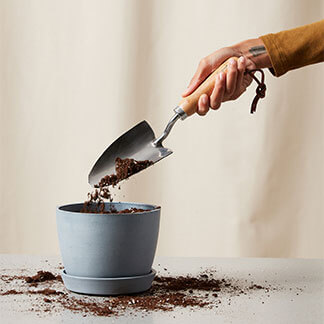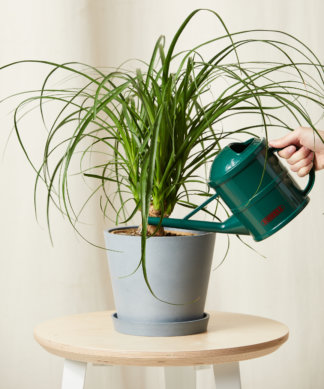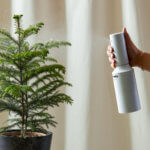Plant Care
Grow-How® Tip: Why Does My Plant Have Yellow Leaves?

If your plant has yellow leaves, there could be a few things causing the issue. The Grow-How® Team is here to help! We understand how concerning it can be when your plant’s leaves are turning yellow, so we’d love to help you work through what could be causing the issue and how you get your plant back on the right track. Below are some of the most common causes of yellow leaves.
Possible Causes of Yellow Leaves
Watering Issues

A good portion of the time, yellow leaves are caused by watering too often. However, some plants can also get yellow leaves when they are underwatered, or watered too infrequently.
It is important to maintain ideal soil moisture for your plant. Finding the right balance between watering too frequently or not frequently enough is easier when you know how much of the soil should dry out for your specific plant. Check out our care guides for specific information on how much your plant prefers its soil to dry between waterings.
To keep your plant full and lush, water evenly all the way around the pot. Water thoroughly until it drips out the bottom of the pot into the saucer. After a few minutes, discard any excess water to avoid soggy soil and ‘wet feet’ which can lead to root rot. Check out Grow-How® Team’s blog post 6 Tips To Properly Water Your Plants for some more watering how-to’s.
Improper Lighting

Many plants can tolerate low light areas, but if the light is too low, this can cause the leaves to turn yellow. Not enough light means the plant can’t photosynthesize efficiently. This causes growth to slow, meaning the roots take up water much more slowly, and often leads to overwatering symptoms.
If you suspect your plant is not getting enough light, try moving it to a spot with bright, indirect sunlight. Bright indirect light can be found next to an east-facing window or a few feet back from an unobstructed southern or western window. If the southern or western window has something like a sheer curtain or natural shade from a tree or building outside, the plant can be placed a little closer.
If your plant loves the sun, you may want to acclimate it to a spot with direct sunlight. Direct light is when your plant gets 6 or more hours of direct sun a day. You will find this kind of light next to unobstructed southern or western windows.
To learn more about indoor plant lighting, check out our lighting guide here! Our care guides detail lighting preferences for your specific plant.
Pests

Yellowing leaves could be a sign that there are pests lurking on your plant. Pests such as mealybugs, spider mites, and aphids feed on the sap from your plant’s leaves which weakens the plant and can lead to discoloration.
Keep an eye out for signs such as fine webbing, thin black dots or clusters of small white dots on the underside of the leaves, cotton-like tufts, hard bumps on the leaves or stems, and sticky residue on the leaves. If you see any of these signs, start pest treatment immediately. Many plant pests can be treated with neem oil or a spinosad treatment.
Nutrient Deficiency

With severe chlorosis, the leaves, affected branches or the entire plant may die. The most common nutrient problem associated with chlorosis is a lack of iron, but yellowing may also be caused by manganese, zinc, or nitrogen deficiencies.
If your plant is putting out new growth, fertilize during the growing season. Any balanced indoor plant food with micronutrients should work just fine! You can use one like this one here or here. Always follow the directions on the label. Get fertilizing tips from the pros in our Grow-How® Team’s guide to fertilizing.
Rootbound

Another thing to consider is whether your plant is outgrowing its current pot. If so, it may be becoming root bound. Root bound conditions can happen when the plant has grown so many roots that there is no more room to expand. This means the roots are taking up too much room in the current pot that there is not a balanced soil-to-root ratio. This inhibits your plant from taking up the proper amount of water and nutrients it needs which can lead to discolored, yellow leaves.
To tell if your plant is root bound, look for roots creeping up along the top of the soil or growing through the drainage holes at the bottom of the pot. Another sign that your plant is root bound: if when watering your plants, the water rushes through the pot and out the drainage hole. You can also pull the plant out of the pot to closely inspect the roots. Read the Grow-How® Team’s blog on How to Repot Your Plants.
Normal Leaf Life Cycle

Some yellowing is normal! If there is new growth on your plant and the yellowing leaves are older, particularly at the bottom of the plant, this yellowing is natural. Your plant sheds its old leaves and sends energy to new growth! You can simply trim any old leaves off to help your plant focus its energy on new and healthy growth.
Get Your Plant Back on Track
Your plant should be able to recover once you figure out the culprit that is causing the yellowing leaves. Adjust your care accordingly and prune off any leaf that is more than 50% discolored using a pair of plant snips. Avoid removing more than 30% of the affected leaves at one time. Pruning the leaves can help your plant focus its energy on new and healthy growth.
When you purchase a plant from Bloomscape, you have access to free one-on-one expert advice from our Grow-How® Team throughout the life of the plant. So if you are still not sure why your plant has yellow leaves, reach out to us — our team is here to help!






















